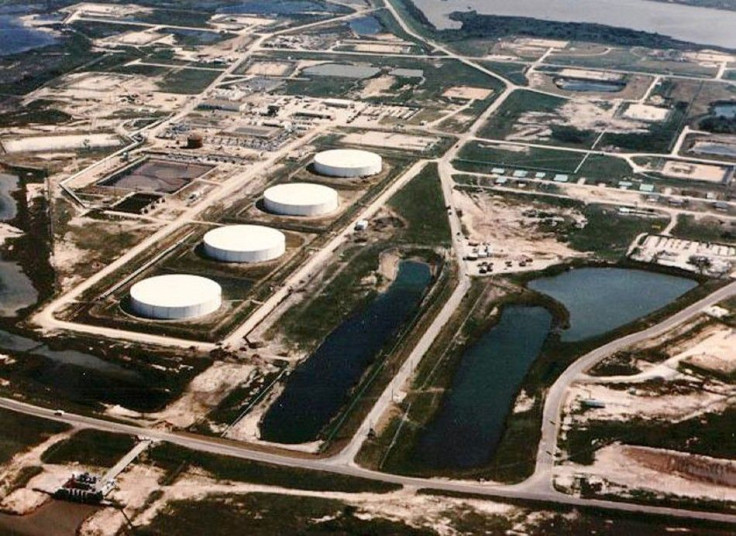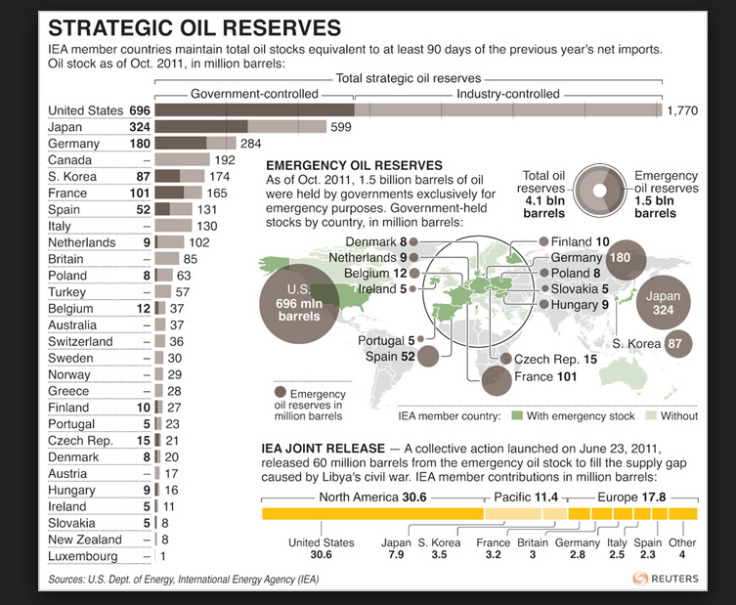Ukraine Crisis: US To Sell Some Crude Oil From Strategic Petroleum Reserve In Latest Tit-For-Tat With Russia's Strongman Putin

The U.S. said Wednesday that it will sell 5 million barrels of crude oil out of its Strategic Petroleum Reserve (SPR) to test how the system is operating, but the move is being seen by many as the latest U.S. salvo against Russia's so-far unchallenged encroachment into eastern Ukraine.
“Due to the recent dramatic increase in domestic crude oil production, significant changes in the system have occurred -- including pipeline expansion, construction of new infrastructure, reversed flow of existing pipelines and increased use of domestic crude oil terminals,” making the move needed, Energy Department spokesman William Gibbons said in a statement Wednesday.
That's the official explanation of why the government is selling oil from the SPR, a network of deep salt caverns along the Gulf of Mexico coast. The more popular understanding of the move can be summed up by blogger zerohedge, who explains, "Of course, this is a direct aim at Putin's pocket-book as his stumbling economy needs high prices to sustain itself."
Any meaningful or sustained release of the reserve, which currently holds slightly more than a three-month supply of oil for the US, would lower the market price for oil and hit Putin's Russia in the pocketbook.
Other countries hold strategic crude oil reserves too, but the size of those other reserves pales in comparison to the SPR, as this infographic from Reuters clearly shows.

Here are several facts about the SPR, from the Energy.gov website.
President Ford set the SPR into motion when he signed the Energy Policy and Conservation Act (EPCA) on Dec. 22, 1975. The legislation declared it to be U.S. policy to establish a reserve of up to 1 billion barrels of petroleum.
The SPR, which is the world's largest supply of emergency crude oil, holds 695.9 million barrels of crude oil.
On Jan. 16, 1991, coinciding with the international effort to counter the Iraqi invasion of Kuwait, President George H.W. Bush ordered the first-ever emergency drawdown of the SPR.
The SPR's second emergency drawdown occurred after Hurricane Katrina caused massive damage to the oil production facilities, terminals, pipelines and refineries along the Gulf regions of Mississippi and Louisiana in late August 2005.
On Sept. 2, 2005, in a coordinated action with the International Energy Agency, President George W. Bush issued a Finding of a Severe Energy Supply Interruption and directed the Secretary of Energy to draw down and sell crude oil from the SPR.
At the current level of approximately 696 million barrels, the SPR holds the equivalent of 94 days of import protection (based on 2012 net petroleum imports). Note: the maximum days of import protection ever held in the SPR was 118 days in 1985.
© Copyright IBTimes 2024. All rights reserved.





















